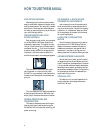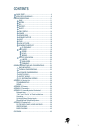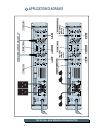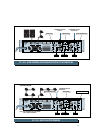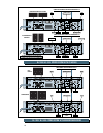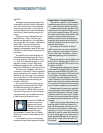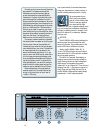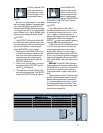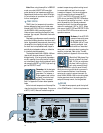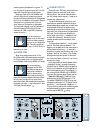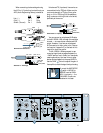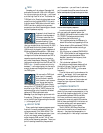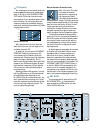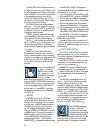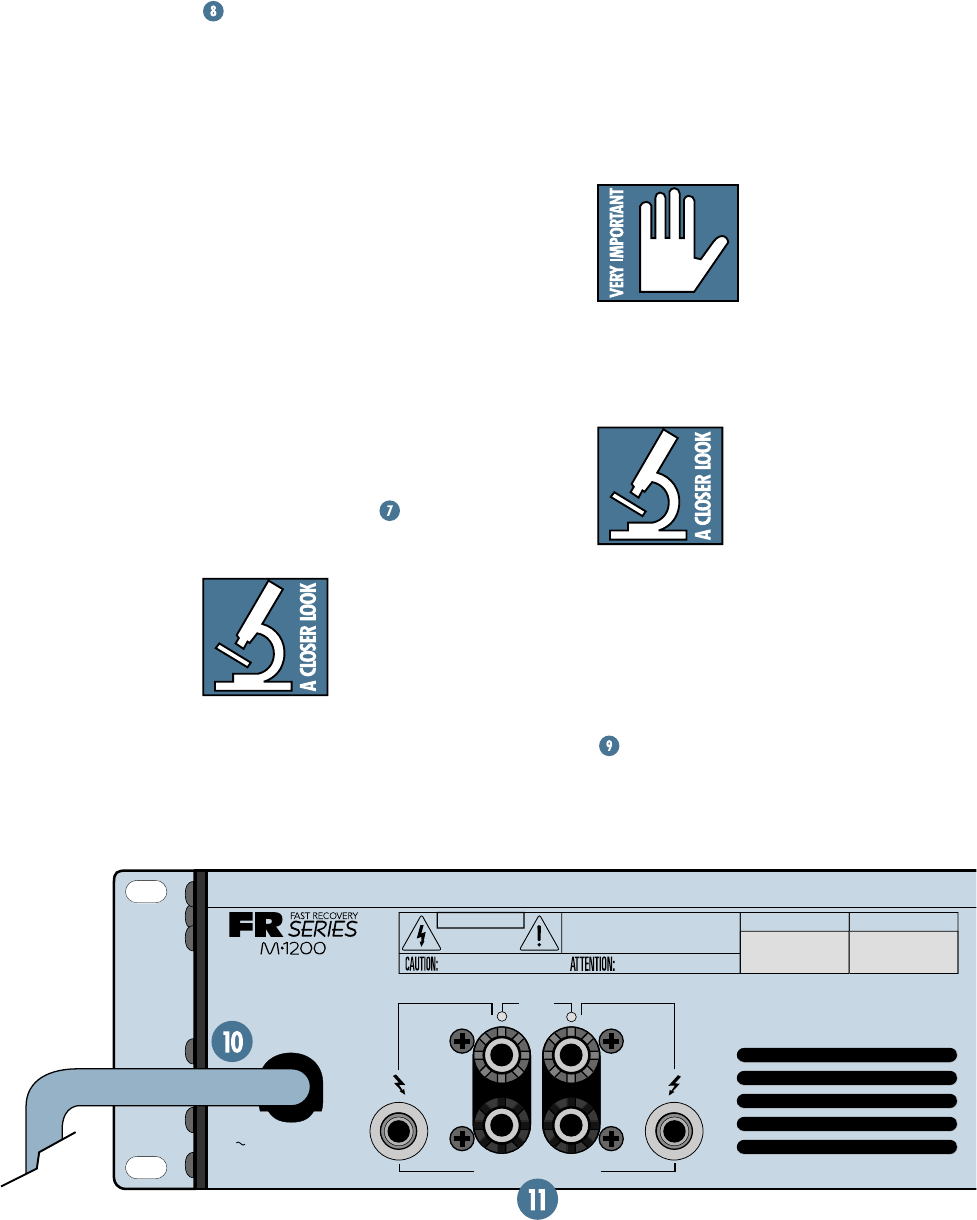
14
CH
1
CH
2
SPEAKER OUTPUTS
+
––
+
SERIAL NUMBER
MANUFACTURING DATE
RISK OF ELECTRIC SHOCK
DO NOT OPEN
REPLACE WITH THE SAME TYPE FUSE AND RATING.
DISCONNECT SUPPLY CORD BEFORE CHANGING FUSE
UTILISE UN FUSIBLE DE RECHANGE DE MÊME TYPE.
DEBRANCHER AVANT DE REMPLACER LE FUSIBLE
WARNING:
TO REDUCE THE RISK OF FIRE OR ELECTRIC SHOCK, DO NOT
EXPOSE THIS EQUIPMENT TO RAIN OR MOISTURE. DO NOT REMOVE COVER.
NO USER SERVICEABLE PARTS INSIDE. REFER SERVICING TO QUALIFIED PERSONNEL.
CAUTION
AVIS:
RISCQUE DE CHOC
É
LECTRIQUE — NE PAS OUVRIR
MONO
BRIDGE
CONCEIVED, DESIGNED, AND MANUFACTURED
BY MACKIE DESIGNS INC • WOODINVILLE • WA
98072 • USA • MADE IN USA • PATENTS PENDING
120 VAC 50/60 Hz
1500 WATTS
+
–
(MONO BRIDGE)
1200 WATTS
4 OHM LOAD MIN.
600 WATTS CH
2 OHMS LOAD MIN.
Note: When using the amplifier in
BRIDGE
mode, one or both
SHORT
LEDs may light
under shorted or low impedance conditions.
Regardless of whether one or both LEDs light,
it’s an indication of a problem that requires
further investigation.
TEMP STATUS
TEMP
(short for temperature) is another
feature designed to keep your mind at ease.
Normally the
COLD
LED is lit, indicating that
the M•1200/M•1400 is working normally.
Under extreme conditions the amplifier may
overheat. You may ask, “What kind of extreme
conditions?”
Overheating problems are usually caused by
one of the following situations: improper venti-
lation, high ambient temperatures, overdriving
the amplifier into clipping, driving the ampli-
fier hard into low impedance loads, frayed or
partially shorted speaker cables, or defective
or internally shorted speakers.
The heaviest load the M•1200/M•1400 can
tolerate is 2 ohms per channel (4 ohms in
bridged mode). If you’ve got a set of speakers
wired in parallel, be sure the load isn’t adding
up to less than 2 ohms. Anything below 2 ohms
can cause the
SHORT
LED to light and trig-
ger the
PROTECT
mode.
Remember: As the load gets
“heavier,” its value in ohms
goes down. For instance, a
2-ohm speaker load is twice
as “heavy” as a 4-ohm load.
Please see “Do The Math: Ohms, Loads and
Such” in Appendix E to learn about speaker
loads.
As the internal temperature of the amplifier
rises, the fan kicks into high speed. This occurs
at 60°C (140°F). More air moves through the
constant temperature gradient cooling tunnel
to remove additional heat from the output
transistors. However, if the internal tempera-
ture of the amplifier should exceed 80°C
(176°F), the
COLD
LED turns off, the
HOT
LED turns on, and both
PROTECT
LEDs shine.
The output of the amplifier is muted — at this
point the amplifier is in Standby mode and
remains there until the internal temperature
cools off to a safe level (55°C or 131°F). When
this occurs, the
HOT
LED and
PROTECT
LEDs
turn off, the
COLD
LED turns on and normal
operation resumes.
Be Aware: If the HOT LED
comes on frequently, some-
thing is overworking the
M•1200/M•1400 or it’s not
properly ventilated. Look
at each of the “extreme conditions” described
above and try to determine what is causing the
amplifier to overheat. Refer to the “Trouble-
shooting” section in Appendix A for more help.
What’s that? Why doesn’t the
fan just go fast all the time?
Well, if it did, you might actu-
ally hear it whirring during
your quiet moments (there
are quiet moments in your life, aren’t there?).
While this whirring would be of no concern in
most live-sound situations, it could become
annoying in a control room environment. So,
when the M•1200/M•1400 is not working hard,
the fan goes slow; when the music gets loud
and puts the amp to work, the fan goes fast.
POWER
To make the amp operate, push the top half
of the
POWER
switch. It clicks into place and a
M•1200 Rear Panel



